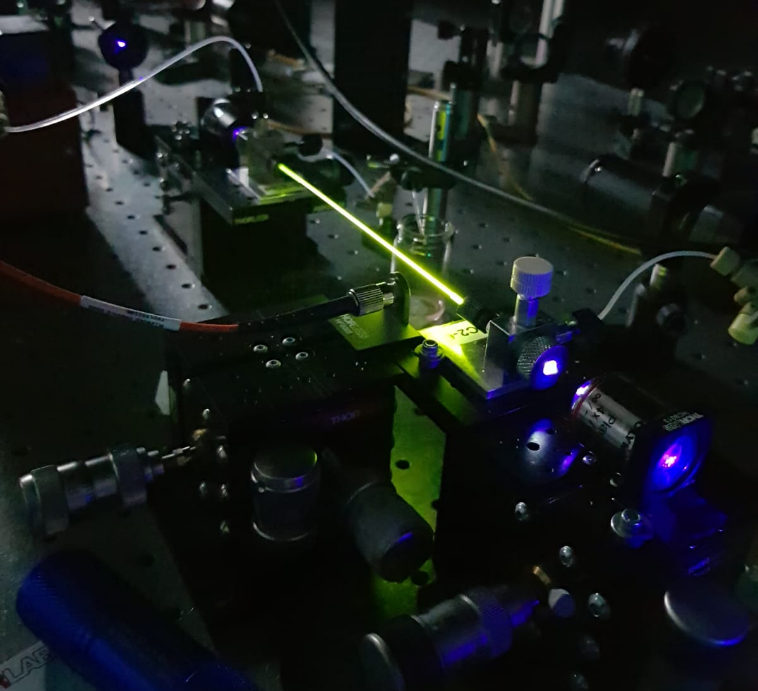Our society is heavily reliant on carbon-containing fuels that release greenhouse gases and contribute to climate change. The UK government aim to be carbon-neutral by 2050, but this will prove a challenge for some industries – such as transport, steel production and chemicals manufacture – where environmentally-friendly alternatives to carbon-containing fuels are difficult to find. Hydrogen as a fuel is promising, but we need to produce it cleanly without greenhouse gas emissions so we can help these industries become green.
One method to create hydrogen cleanly is to split up the water molecule (H2O) into hydrogen (H2) and oxygen (O2) using sunlight, just like a leaf in a plant. To do this we use special chemicals called photocatalysts, which can capture energy from sunlight to drive a chemical reaction. The problem is no one really knows how these photocatalysts work!
My project seeks to change this by using optical fibres, the same technology used to give you high-speed internet. Optical fibres are glass tubes about the width of a human hair that guide light. The fibres we use are hollow in the middle so we can fill them with a chemical sample. We shine light down one end of the optical fibre and see what we get out the other end. Chemicals interact with the light, absorbing and emitting specific colours, which means the light at the output will change over the course of a reaction. We call these ‘spectroscopic signatures’ and use them to work out what our chemicals are and how much of them we are producing.
The advantage of using these optical fibres is the enhanced light interaction over conventional chemical reactors, and the ultralow volumes mean we don’t waste a lot of photocatalysts that are expensive and difficult to make. With an improved understanding of how these photocatalysts work, we hope to produce green hydrogen more efficiently in the future.
Takashi Lawson
NanoDTC Student, c2017

